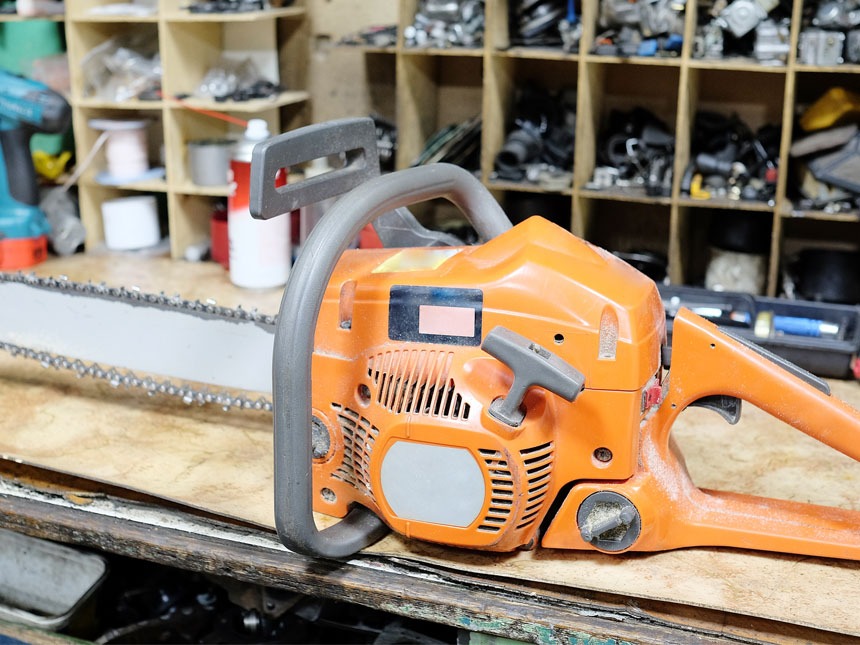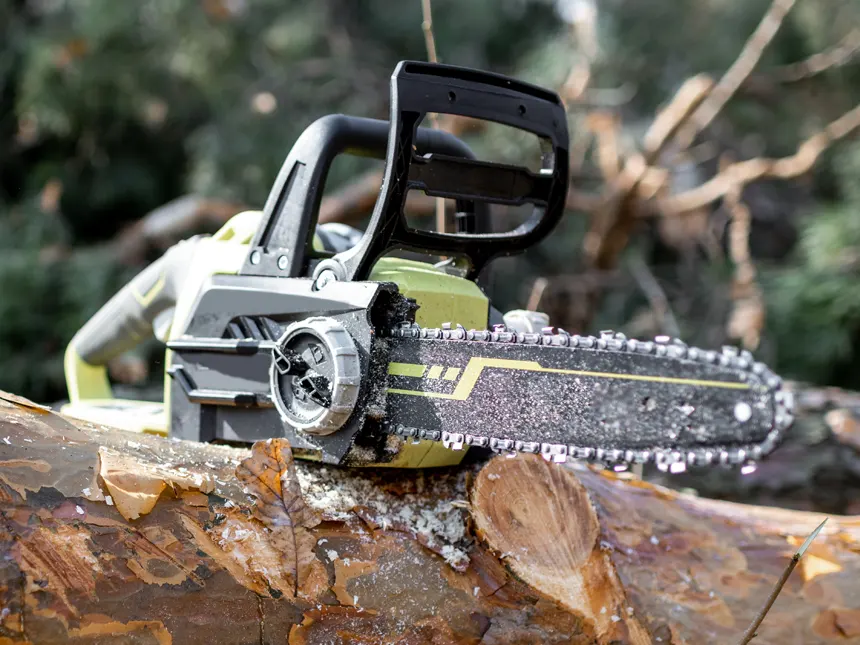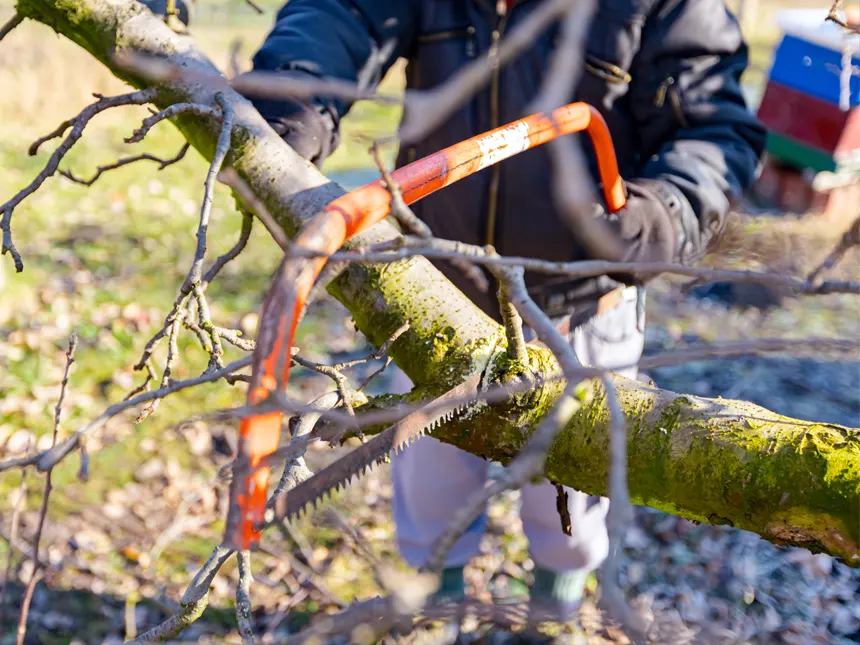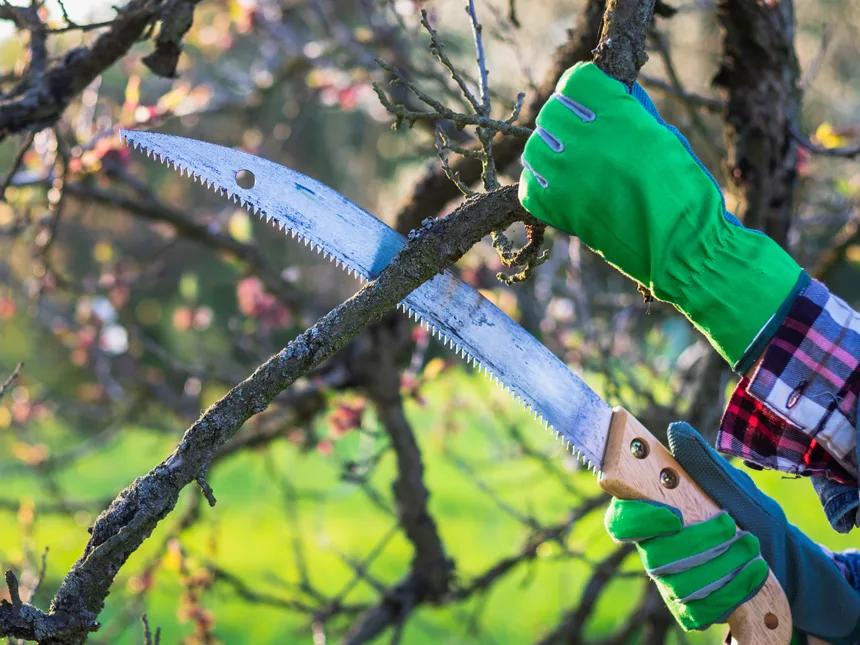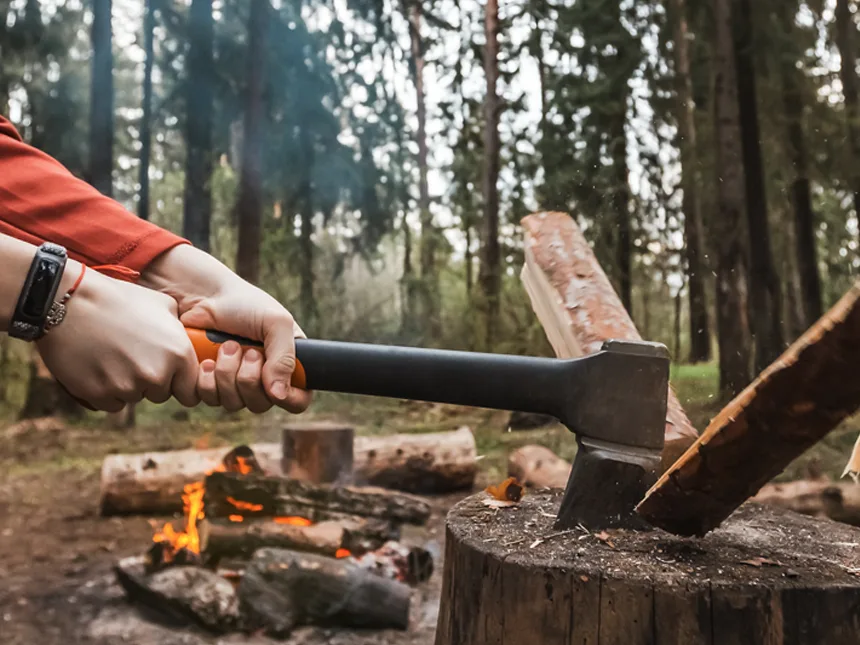Pecan Firewood: How Good Is It?
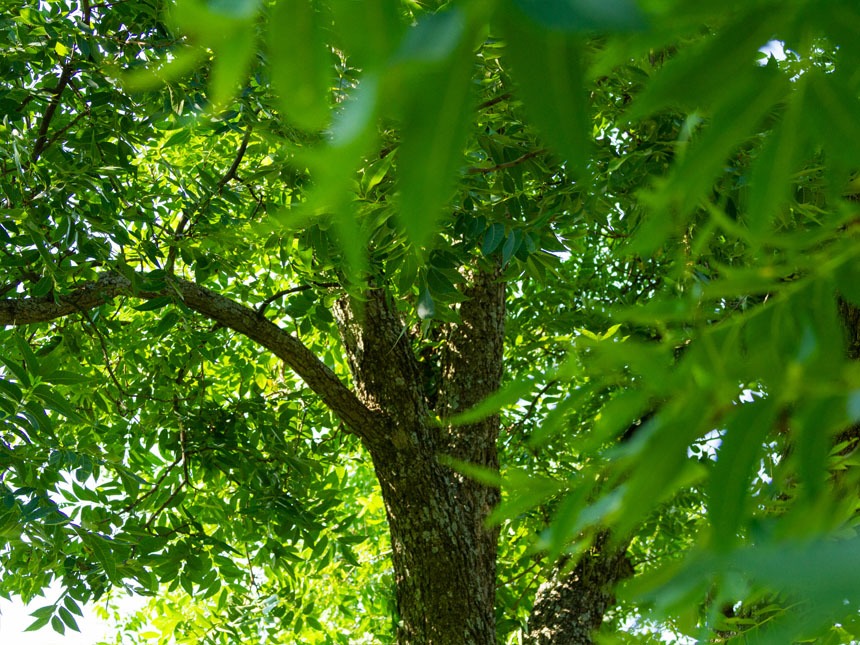
Timber Gadgets is reader-supported. We may earn a commission if you buy through the links on our site.
Pecan makes an excellent firewood. Hickory and Pecan belong to the same family of trees and share a lot of characteristics such as smell, density, and burning properties.
It is found in the Southern states of America in hot, humid environments. However, some of his varieties are also adapted to northern and cold areas. It is a dense hardwood, and it burns long, giving out a good amount of heat. There are over 500 types of Pecan trees.
One of its peculiar traits is its smell. Belonging to hickory, it also produces a very good aroma which may leave your room fragrant even after the fire has long burned out. For its smell, it is used by many cooks because it adds a pleasantly sweet taste to the meat. This makes it great for barbecue and smoking purposes.
Its wood is used for many purposes. Due to its high density and good grain, it is used for furniture and makes good lumber. It’s pretty costly, compared to other hardwoods, and you are lucky if you have this firewood in your stove.
Burning any type of wood unseasoned (wet) is problematic because it’s tough to light and produces excessive smoke and creosote compared to that of properly seasoned wood.
Table of Contents
Burn Qualities of Pecan Firewood
Pecan produces a high amount of heat and burns slow and long, making it excellent wood to burn. Though we have other firewood which produces an even higher BTU, Pecan is still among the top tier.
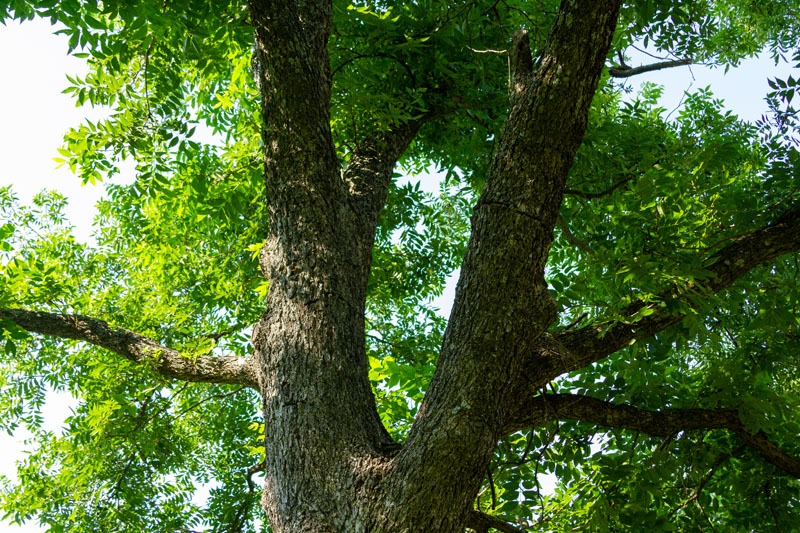
Woods are divided into two groups: hardwood and softwood. Pecan is a hardwood. Softwood has a low density and more space in the wood while hardwood is usually dense and carries more mass and organic matter. Hardwood tends to burn longer and produce more heat. So, hardwood carries more favorable characters and is preferred by most people.
So being a dense wood, it produces a high amount of heat and burns for a long time. It produces great coals. If seasoned properly, it produces very little smoke and smells very pleasant.
Owing to these characters and its high price, it is more often burnt for aesthetic purposes than as bulk wood for open burning. It produces very few sparks and crackles, making it exceptional for burning at home.
- BTU: 28 million per cord
- Seasoning Time: 6 months to 1 year
- Weight: 5,500 lbs wet / 4,500 lbs dry
- Resin / Sap Content: 24-percent
- Smoke: Low or medium
- Splitting Difficulty: Medium to hard
Heat Output
It produces 28 million BTUs of heat. This is the amount of heat that is expected to release when a cord of firewood is burnt.
A cord of firewood is usually sized in a dimension of 4x8x4 cubic feet, which makes a total volume of 128 cubic feet. A cord is a conventional unit in which firewood is measured in the United States.
However, because people do not burn this length of wood (4 feet) in their stoves, the length of these pieces can be reduced to 16 or 24 inches, which is called a face cord or rick. Two or three of these ricks make a full cord.
Creosote
All types of woods, if not burnt properly, can release a large number of smoke particles. These particles may stick inside the walls of the chimney and build up layers. It is called creosote.
It has tar-like properties and is highly flammable. If it gets accumulated in a high amount it can catch fire and put your home at fire risk or start chimney fires which are obviously not good.
The amount of creosote also depends upon the type of wood and the number of resins present in it. Pecan burns very clean if it is dry and seasoned properly with a moisture content below 20 percent. If it carries a moisture content of more than 20 percent, it can produce a high amount of smoke which increases the creosote in your chimney.
Spark
Pecan wood is safe to burn as it produces a very low amount of sparks. Burning wood can produce sparks and crackles for various reasons, which pose a great threat to home fires if to tended to properly. Always be aware of this risk and use doors for your fireplace!
Any type of wood burnt with high moisture content produces more sparks. It is because on heating moisture is converted into steam which produces a pressurized release of steam. It can cause the spread of sparks and crackles.
Coals
Burnt Pecan wood produces excellent coals. The quality of coal is determined by the amount of time for which it keeps burning and provides a decent amount of heat. It does not let the heat extinguish early. This can be a good or bad thing depending on your preference!
Coal from some other woods like pine and cedar burn out fast, and they cannot provide heat for a longer duration of time. It also leaves behind a very low amount of fine ash.
Sap
Pecan contains around 12 percent sap or moisture content, but it does not affect the quality of firewood because it dries well and does not lower the burning characteristics of the wood.
Smoke
Fully seasoned Pecan wood produces a very low amount of smoke, making it a safe option for burning. However, unseasoned (or green) Pecan wood takes more time to burn produces more smoke. It also increases the likelihood of creosote buildup in your chimney.
Smell
Pecan wood smells great. It is among the top fragrant firewood. It produces a decent aroma that lingers in the room even after the fire has long burnt out.
It smells like pecan nuts with a touch of vanilla – you may find it quite appealing. Its smell is a premium characteristic of this wood. Due to its smell and low smoke, it is used to flavor food in cooking.
Splitting Pecan Wood
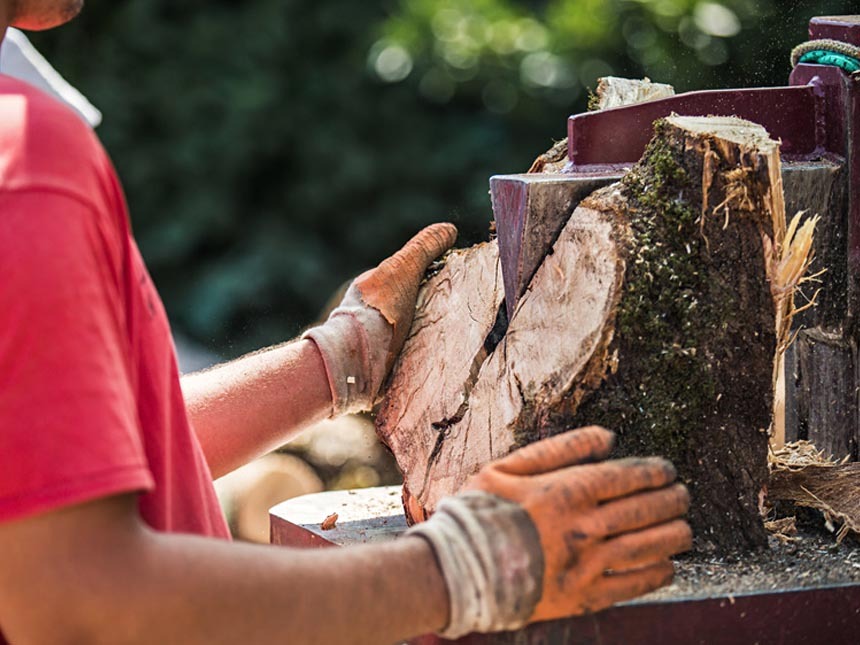
Splitting any type of wood is a chore but Pecan isn’t too difficult. Furthermore, it is recommended to split while fresh because it is easier to work with. Dried wood or wood having knots can be difficult to split. It is preferable to use a mechanical splitter. If you have one available, do that.
Wood is split because large-sized logs of wood cannot fit into your fireplace with ease. The second purpose is to accelerate the seasoning process as it would provide a larger area for moisture escape.
Comparing Pecan to Other Firewood
Pecan firewood is considered among top quality firewood, although there are a few firewood species that produce more heat compared to it. It sparks very low, it is preferred over other woods for its aroma which is pleasant and not too intense.
However, its high price restricts its wide use as firewood, and commonly it finds its excessive use as a fruit tree. Its price is its only down point for its firewood use, otherwise indoors or outdoors, pecan is great firewood to burn and enjoy.
It is widely used to smoke food. Chefs all over the world prefer it for cooking. It adds a sweet and nutty flavor to meat, which improves its taste and aesthetic value.
Table of comparison with other firewood
| Species | Weight (lbs./Cord) Green | Weight (lbs./Cord) Dry | Heat per Cord (Million BTUs) |
|---|---|---|---|
| Pecan | 5500 | 4500 | 28.5 |
| Osage-orange | 5120 | 4728 | 32.9 |
| Walnut, Black | 4584 | 3192 | 22.2 |
| Cherry | 3696 | 2928 | 20.4 |
| Elm, American | 4456 | 2872 | 20.0 |
How Long To Dry (Season) Pecan Wood
Seasoning of wood means drying the firewood to decrease the moisture level below 20 percent.
In general, hardwoods take more time to dry out as compared to softwood. Pecan is a hardwood; it may take at least 6 to 8 months for seasoning however it is recommended to season it for one year at least for excellent quality firewood.
You can also dry firewood in a kiln but it may not always be accessible. But it is preferable if you have success with a kiln because it speeds up the drying process and produces uniformly seasoned firewood.
Proper seasoning is necessary so that firewood can show its excellent properties like the smell, heat output, and coals. Wet or “green” wood with high moisture is typically avoided as it tends to produce more smoke, it’s harder to burn, and often smells bad.
To properly achieve the seasoning in minimum duration of time it is necessary to focus on proper practices of seasoning as described below.
- Split the wood before seasoning if possible. The split wood will lose moisture faster.
- Firewood should be placed in stacks that can be 2 to 3 ft wide and around 4 feet high. Stacked wood should be raised above the ground to avoid any moisture. It should also be away from walls and shady places if possible (sunshine and airflow are your best friend).
- Keep distance of a few feet between the rows of stacked firewood, this will allow the air movement between the rows and moisture will escape rapidly.
- It is recommended to cover top of stacked firewood. This I will save your firewood from rain which can slow the seasoning process.
Identifying Pecan Trees
Pecan belongs to the nut family. It is a deciduous tree, meaning it will shed leaves in autumn. Conifers are evergreen and they don’t shed their leaves in any season. Pecan tree grows tall. It is the tallest tree in the hickory family and can exceed 128 feet of height in good growing conditions.
Leaves
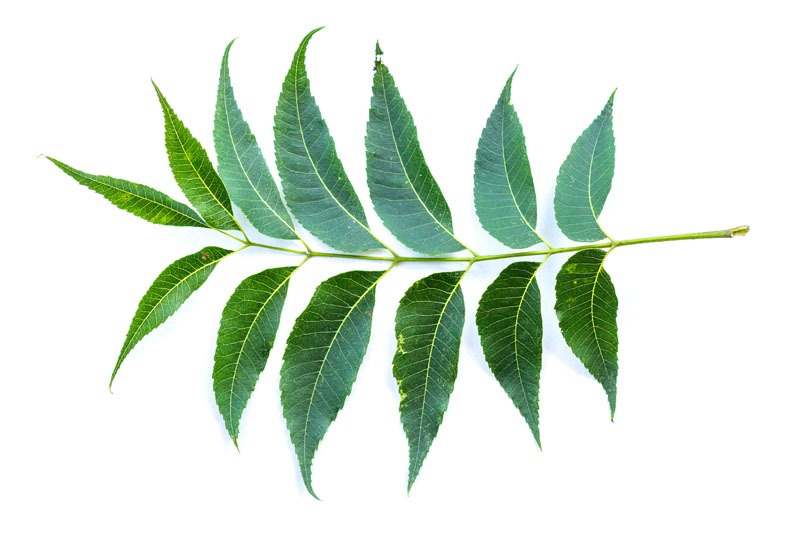
Pecan trees have compound leaves which look flat and have pointed tips. Leaves can have 9 to 17 leaflets running in pairs and the last terminal leaflet is single. Greenish-yellow leaves carry on a pleasant smell if you crush them in your hand.
Bark
Its bark may have prominent ridges and furrows which are specific to Pecan. Mature trees have a reddish-brown bark while young tree bark has greyish color.
Nuts
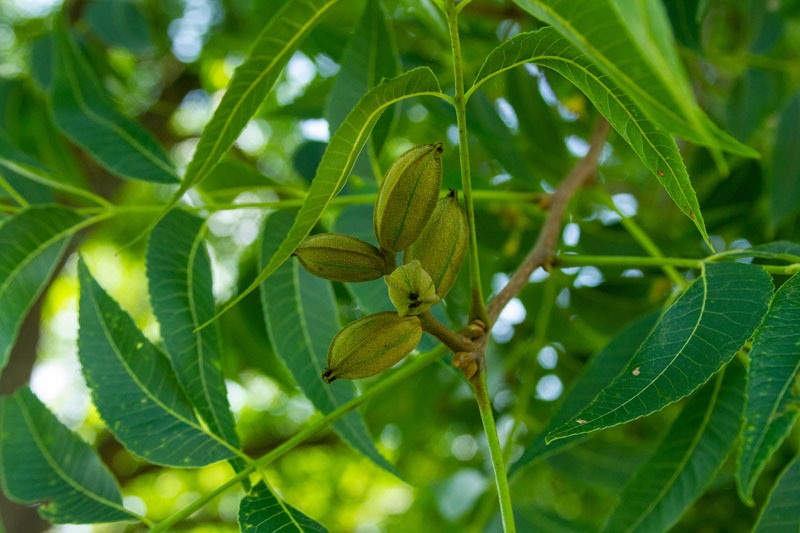
It produces tasty nuts (Pecans, ofc). Its pecans show green color on the tree and on ripening they turn into brown and fall off the tree. These have thin shells and their husk divides them into four sections. The nut is edible and high in oil. It is a highly prized nut and most people who have Pecan trees growing in their yard keep them around as long as possible.
An Excellent Wood for Smoking Food
Pecan wood is used to smoke poultry and other kinds of meat. You can change the wood into chunks or chips as you find it more suitable. Chips are relatively easy to work with and they release smoke quickly. However, cooking big pieces of meat for extended periods of time, you should use chunks that can smoke for a longer time. Chunks and chips should be soaked in water for 15 to 30 minutes to extend the burning time and so that it may release more smoke.
Pecan firewood adds a flavor that is sweet and nutty. It is usually recommended to mix pecan with mesquite to obtain excellent smoking properties because mesquite has a deep flavor.

